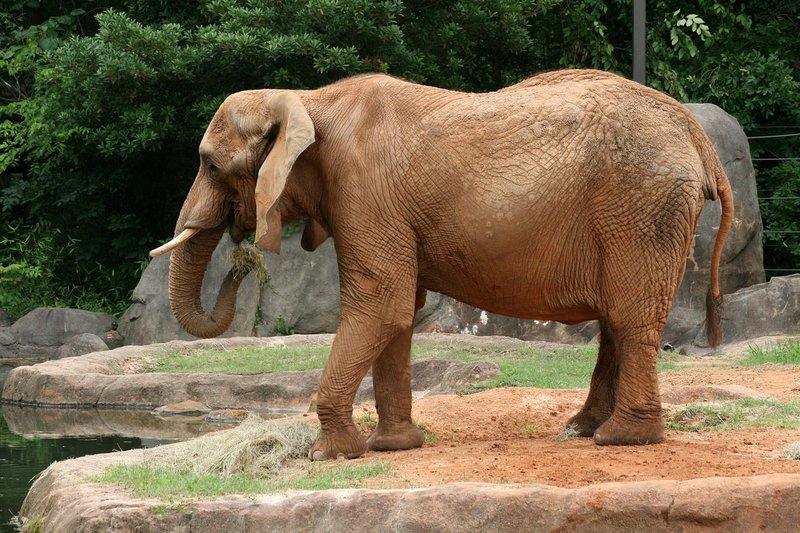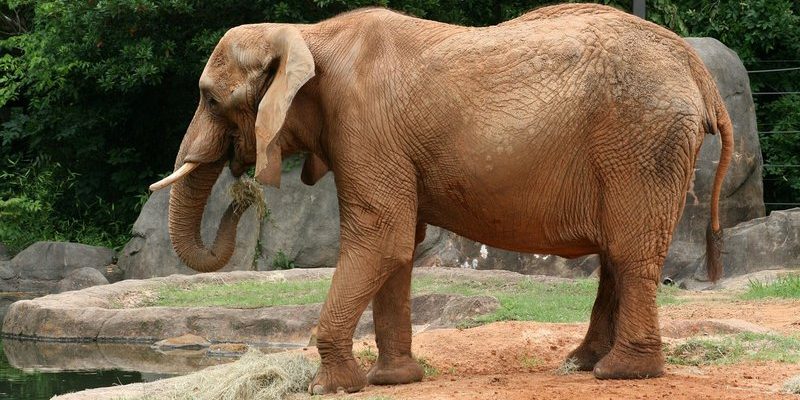
When you think of elephants, you might picture their enormous size, long trunks, and large ears flapping gracefully. These magnificent creatures are not just the largest land animals on Earth; they are also incredibly intelligent and social. Elephants have a remarkable way of living that involves deep family bonds, complex communication, and a strong connection to their environment. They truly are one of nature’s wonders.
Imagine an elephant walking through a sun-soaked savanna, a gentle giant moving with purpose. Their presence commands respect, but there’s also warmth in their interactions. They share food, mourn their dead, and even play together, showing emotions that resonate deeply with us. Understanding elephants offers us a glimpse of the rich tapestry of life in the wild and the importance of conservation.
Types of Elephants
There are three main species of elephants: the African bush elephant, the African forest elephant, and the Asian elephant. Each species has unique characteristics and adaptations that help them thrive in their respective habitats. The African bush elephant is the largest, often found roaming the plains and savannas of Africa. With their larger ears and tusks, they are built for the open landscape.
On the other hand, the African forest elephant is smaller and more elusive, adapted to life in dense rainforests. Their smaller tusks and rounded ears help them navigate through thick vegetation. Lastly, the Asian elephant, slightly smaller than their African cousins, primarily inhabits grasslands, forests, and even some urban areas in Southeast Asia. All three species play critical roles in their ecosystems, impacting everything from vegetation to other wildlife.
Physical Characteristics
Elephants are defined by some striking physical features. Their most iconic attribute is undoubtedly their trunk, which is a fusion of the nose and upper lip. This fascinating appendage has more than 40,000 muscles and serves multiple purposes, like grabbing food, drinking water, and even communicating. Imagine having a tool that can help you pick up a single peanut or lift an entire tree branch! That’s the versatility of an elephant’s trunk.
Another remarkable aspect is their ears, which can be quite large, especially in African elephants. These massive ears act like radiators, helping to regulate their body temperature. As blood flows through the extensive network of veins in their ears, the heat dissipates into the surrounding air. It’s fascinating how nature has equipped them with such ingenious adaptations for their survival.
Habitat and Range
Elephants are found in a variety of habitats, which play a crucial role in their survival. African elephants thrive in diverse ecosystems ranging from savannas and grasslands to forests. These habitats are rich in vegetation, providing the necessary food sources they require. Meanwhile, Asian elephants prefer forested areas, where they can find shelter and forage on shrubs and trees. Due to their size and eating habits, they spend a significant portion of their day—up to 16 hours—feeding!
Their range has significantly diminished over the years due to habitat loss and human encroachment. Once roaming vast areas, many elephant populations are now restricted to protected reserves and national parks. It’s a pressing issue, as the loss of habitat not only threatens their survival but also disrupts the delicate balance of the ecosystems they inhabit. Conservation efforts are vital to ensure these magnificent beings continue to roam the Earth.
Diet and Feeding Habits
Elephants are herbivores, meaning they primarily feed on plants. Their diet is quite varied, including grass, leaves, fruits, and bark. An adult elephant can consume up to 300 pounds of food in a single day! Picture that—eating about the size of a small car in just 24 hours. This immense appetite is fueled by their large body size, which requires substantial nutrition to sustain their energy levels.
What’s fascinating is how elephants influence their habitats through their feeding habits. By uprooting trees and consuming vast amounts of vegetation, they help shape the landscape, creating openings for other plants to grow. This process encourages biodiversity and allows multiple species to thrive in the ecosystem. Their role as “keystone species” highlights the interconnectedness of nature, showing how one species can impact many others.
Social Structure and Behavior
Elephants are incredibly social animals, living in tight-knit family groups usually led by a matriarch. This elder female is usually the largest elephant in the group, and her experience guides the herd through challenges like finding food and water. The bonds between family members are strong, filled with affection and mutual support. Young elephants are nurtured not just by their mothers but also by aunts, sisters, and even grandmothers!
Communication is another fascinating aspect of their social lives. Elephants use a range of vocalizations, body language, and even infrasound (sound frequencies below human hearing) to communicate over long distances. You might be surprised to learn that they can detect rainstorms from miles away, guiding their herds to water sources. Their ability to connect with one another is truly remarkable, showcasing the complexity of their social interactions.
Conservation Status and Threats
Sadly, elephants face significant threats today. Poaching for ivory remains a serious issue, leading to drastic decreases in their populations, particularly in African elephants. Habitat loss due to agriculture, urban development, and deforestation adds to their challenges. As their homes vanish, so do their chances of survival. This dire situation has prompted a global call for conservation efforts to protect these majestic animals.
Conservation groups are working tirelessly to safeguard elephant habitats, raise awareness about the importance of elephants, and combat poaching. Programs involving local communities help foster coexistence between humans and elephants, showing that both can thrive together. It’s essential to support these initiatives and understand that our actions can have a direct impact on the future of elephants.
Interesting Facts About Elephants
| Species | African Bush Elephant, African Forest Elephant, Asian Elephant |
| Weight | Up to 14,000 pounds (African Bush) |
| Height | Up to 13 feet at the shoulder (African Bush) |
| Diet | Herbivorous (grass, leaves, fruits) |
| Lifespan | 60-70 years in the wild |
| Social Structure | Matriarchal herds |
| Gestation Period | About 22 months |
Elephants are much more than just large animals. They are intricate, social beings that play a vital role in their ecosystems. From their incredible intelligence to their emotional depth, there’s so much more to these creatures than meets the eye. As we continue to learn about and engage with their world, it becomes clear that we have a responsibility to protect them.
So, the next time you see an elephant, whether in a documentary or at a sanctuary, remember the amazing journey they take each day, the bonds they share, and the challenges they face. By understanding elephants, we open our hearts and minds to the beauty of wildlife and the importance of preserving it for generations to come.
FAQ
What is the average weight of an elephant?
The average weight of an adult elephant varies by species. African bush elephants can weigh up to 14,000 pounds, while the Asian elephant typically weighs between 6,000 to 11,000 pounds. African forest elephants are smaller, averaging around 10,000 pounds.
How long do elephants live in the wild?
In the wild, elephants can live to be 60-70 years old. Their lifespan can be influenced by various factors, including habitat quality, food availability, and threats from poaching or human-wildlife conflict.
What do elephants eat?
Elephants are herbivores and consume a wide variety of vegetation, including grasses, leaves, fruits, and bark. They need to eat large amounts of food each day—up to 300 pounds—to sustain their massive bodies. This diet varies based on their habitat and the season.
Are elephants really afraid of mice?
The idea that elephants are afraid of mice is more myth than reality. While they may be startled by smaller creatures, it’s not specific to mice. Elephants are generally cautious about anything that intrudes on their personal space, regardless of size.
How do elephants communicate with each other?
Elephants communicate through a variety of vocalizations, body language, and even infrasound, which is sound at frequencies below human hearing. They can use these low-frequency sounds to communicate over long distances, allowing them to stay connected with their herd members.
Do elephants have good memories?
Yes, elephants are known for their impressive memory. They can remember locations of water sources, social connections, and even dangerous situations. This ability to recall important information is crucial for their survival in the wild.
What are the biggest threats to elephants today?
The biggest threats to elephants include poaching for ivory, habitat loss due to human activity, and climate change. These factors contribute to declining populations and endanger the future of these majestic creatures.
How can we help protect elephants?
There are many ways to help protect elephants, from supporting conservation organizations and wildlife reserves to spreading awareness about the issues they face. You can also avoid products made from ivory and encourage others to do the same, promoting a future where elephants can thrive.
What is the role of elephants in their ecosystems?
Elephants play a crucial role as “keystone species,” meaning their presence significantly impacts the ecosystem. By feeding on various plants and uprooting trees, they help maintain the balance of their habitats, allowing for a diverse range of flora and fauna to flourish.
Can elephants recognize themselves in a mirror?
Yes, elephants have demonstrated self-awareness by being able to recognize themselves in mirrors. This ability indicates a level of intelligence and cognitive function that is impressive in the animal kingdom.

